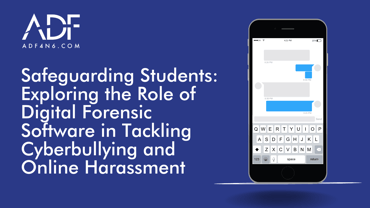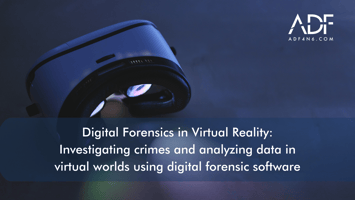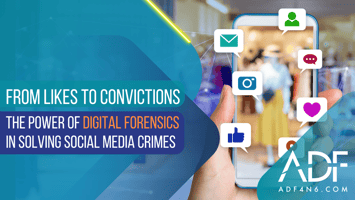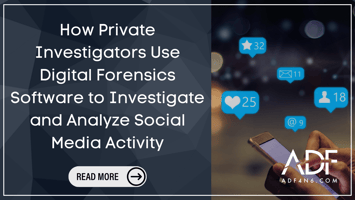Virtual reality (VR) is a computer-generated simulation or recreation of a three-dimensional...
Safeguarding Students: Digital Forensic Software Against Cyberbullying
Digital forensic software plays a crucial role in the education industry when it comes to investigating incidents of cyberbullying and online harassment.Technology is advancing quickly and digital platforms are widely used among students. This has created a challenge for educational institutions: they must ensure a safe and secure online environment for their students. Digital forensic software provides essential tools and techniques for school resource officers (SROs) to investigate and address these issues effectively for safeguarding students.
effectively for safeguarding students.
Cyberbullying and online harassment can severely affect students' mental health, academic performance, and overall well-being. Nearly half of U.S. teens ages 13 to 17 (46%) report ever experiencing at least one of six cyberbullying behaviors asked about in a Pew Research Center survey conducted April 14-May 4, 2022 [1]. To combat these issues, educational institutions need to proactively monitor and address incidents of cyberbullying and online harassment.
What Advantages Do School Resource Officers Have When Using Digital Forensic Software?
-
Digital forensic software allows school resource officers to collect and preserve digital evidence. These tools can capture data from various sources, such as computers, smartphones, tablets, and online platforms. Information such as text messages, online threats, social media posts, emails, and browsing history can be extracted. This gives SROs an in-depth view of the incident. Educational institutions must preserve this evidence in a forensically sound way. This ensures the evidence is admissible in legal processes if needed.
-
Investigators can examine the extracted data, uncover connections between different pieces of information, and identify patterns of behavior. Analysis can help identify the harasser. Additionally, it can show the extent and impact of cyberbullying or online harassment. Digital forensic software often incorporates advanced search and keyword filtering capabilities, making it easier to locate specific content or identify relevant trends in the data.
-
Digital forensic software also supports collaboration and information sharing among parties involved in addressing cyberbullying and online harassment incidents. School administrators, school resource officers, counselors, and teachers can access the software's findings and collaborate on strategies to support the affected student and address the issue immediately. This collaborative approach enhances communication, enables a coordinated response, and ensures that everyone involved is well-informed about the situation.
-
Digital forensic software assists in the implementation of proactive measures to prevent cyberbullying and online harassment. By analyzing historical data and identifying common patterns or risk factors, educational institutions can develop strategies, policies, and educational programs that promote a safe and inclusive digital environment for students. Social media monitoring and analysis can detect early signs of cyberbullying. This enables timely intervention and provides support for student safety.
Educational institutions can use e-discovery and digital forensics software to create safer online environments for students. Technology is constantly changing. Digital forensic tools are becoming increasingly important for protecting the mental health of students in the digital world.
ADF Solution’s digital forensics software gives school resource officers the power to help educational institutions combat bullying and harassment. ADF’s automated cyber investigation tools can be used on-scene to triage devices, and collect evidence from witness, victim, and suspect devices. SROs can confidently retrieve electronically stored information (ESI) from students' mobile devices and those devices provided by schools.
With ADF software SROs have the tools to recover pictures, videos, audio files, documents, user-defined file types, browsers, browsing history, download history, search terms, form data, bookmarks, and more. Screenshots and screen recordings from Android and iOS mobile devices can also be recovered, allowing SROs to collect evidence from students' devices.





